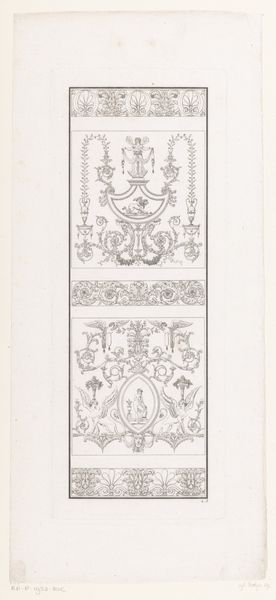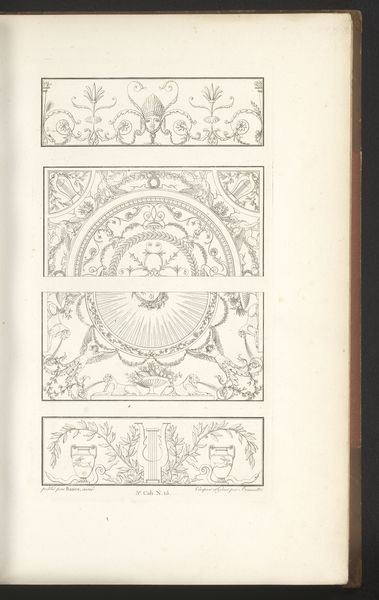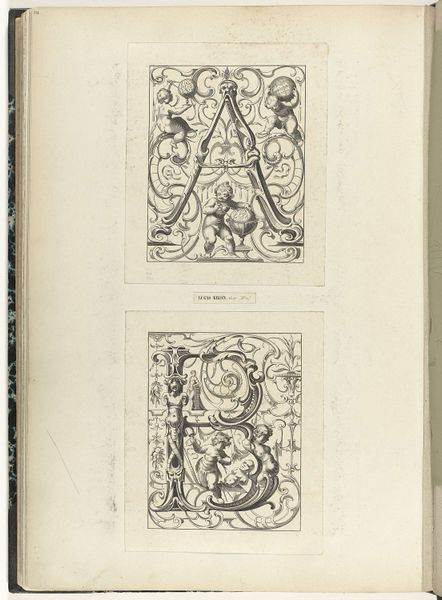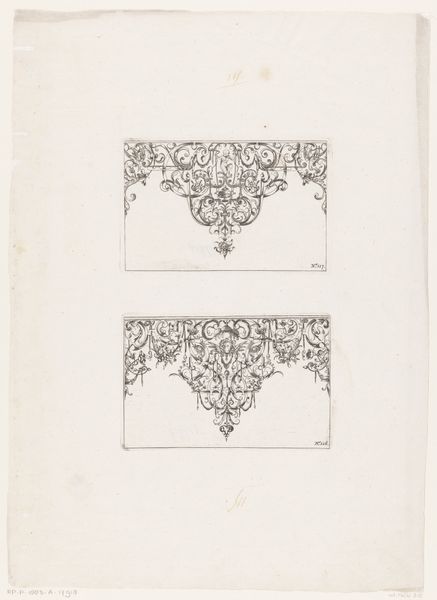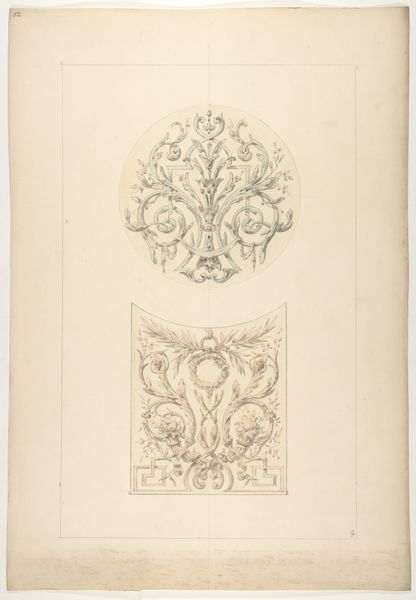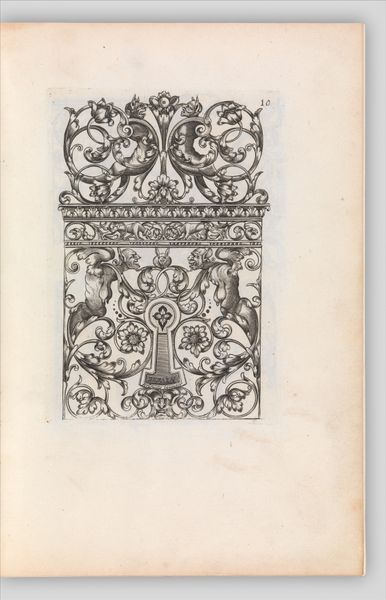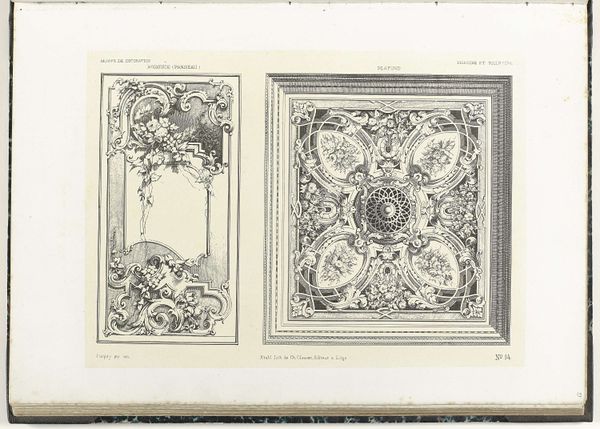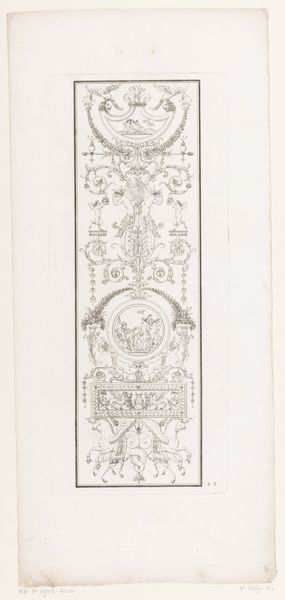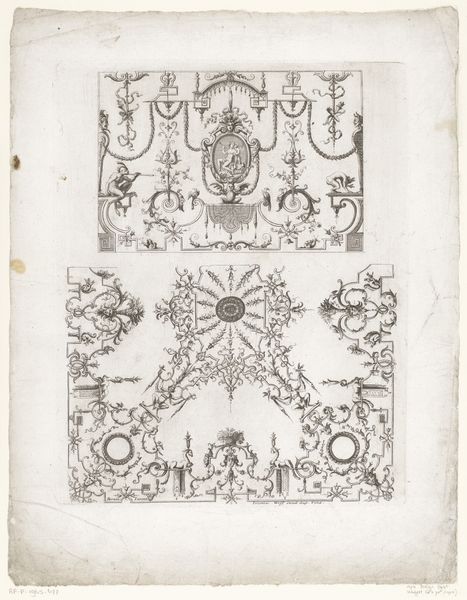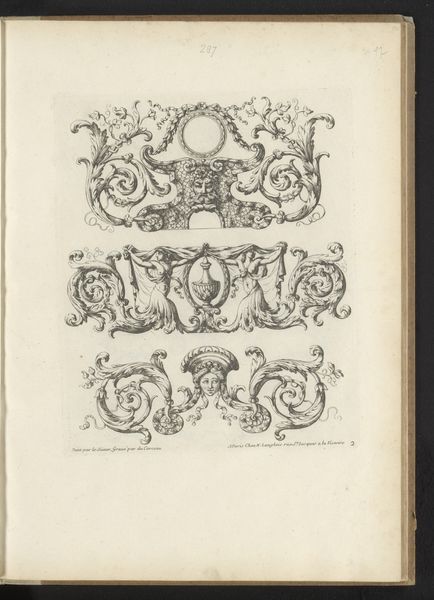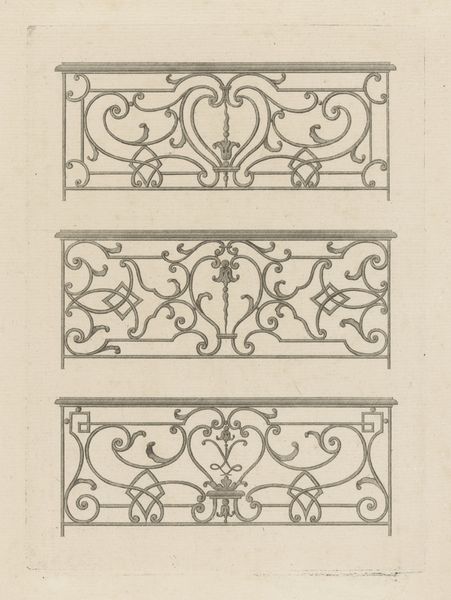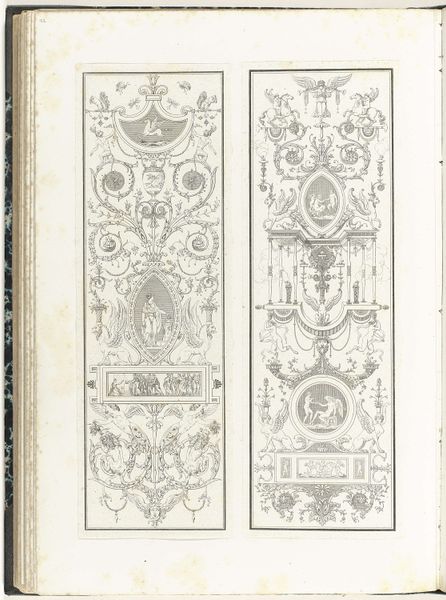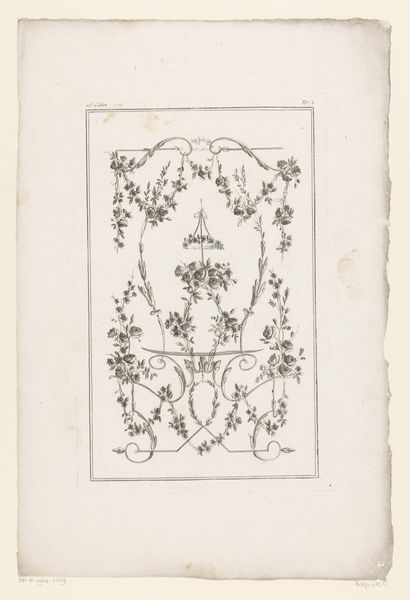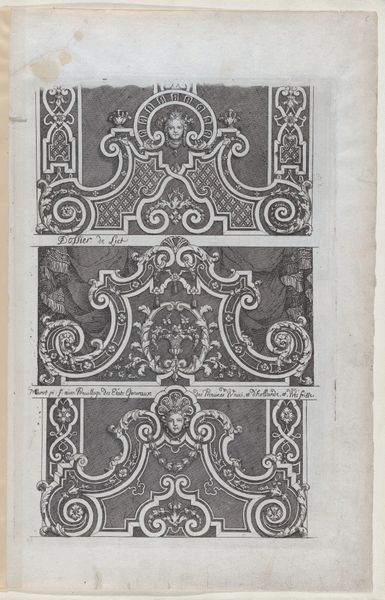
drawing, graphic-art, print, pen, engraving
#
drawing
#
graphic-art
#
pen drawing
# print
#
linocut print
#
geometric
#
line
#
pen
#
decorative-art
#
engraving
Dimensions: height 418 mm, width 290 mm
Copyright: Rijks Museum: Open Domain
Curator: Look at this fascinating engraving. Entitled "Drie balkons," or "Three Balconies," it's attributed to J. Herman and thought to have been created sometime between 1866 and 1900. The print showcases detailed designs for decorative ironwork. Editor: My first thought? An invitation to daydream. It’s not just iron; the flourishes and curlicues look like frozen vines. There's something playfully theatrical about their compositions, like stages waiting for actors. Curator: Exactly! Consider the process of creating these designs. An engraver painstakingly etching these elaborate patterns, the artisanal labor embedded in architectural design, which often goes unseen, focusing instead on consumption or the built structure itself. The artist wasn't just rendering balconies, they were documenting craft. Editor: And in those documented crafts, it is easy to get carried away dreaming with a hint of melancholy; each balcony design carries the whiff of potential narratives. They evoke different moods, don't they? The top one, quite regal; the middle one, slightly secretive, almost obscured; and the last has the regular elegance of a town house somewhere. Curator: You're picking up on what makes it significant: How ornamental ironwork moved beyond simple utility. This was mass produced by forges employing wage laborers. By examining designs for balconies, a materialist perspective exposes how design, labor and class are interlocked. Editor: I keep imagining stories. What whispered conversations happened behind these balustrades? What dramatic entrances? All that ornate work really transforms basic architecture into poetry, gives an opportunity to the everyday to touch transcendence and aspiration. Curator: It is the connection between the materials, the process and the human aspiration, made solid in iron, ink, and paper. It's like the blueprint to the dream of living well. Editor: Definitely a dreamy architecture, these prints preserve those whispers and dramas across time, don't they? Gives food for thought.
Comments
No comments
Be the first to comment and join the conversation on the ultimate creative platform.
